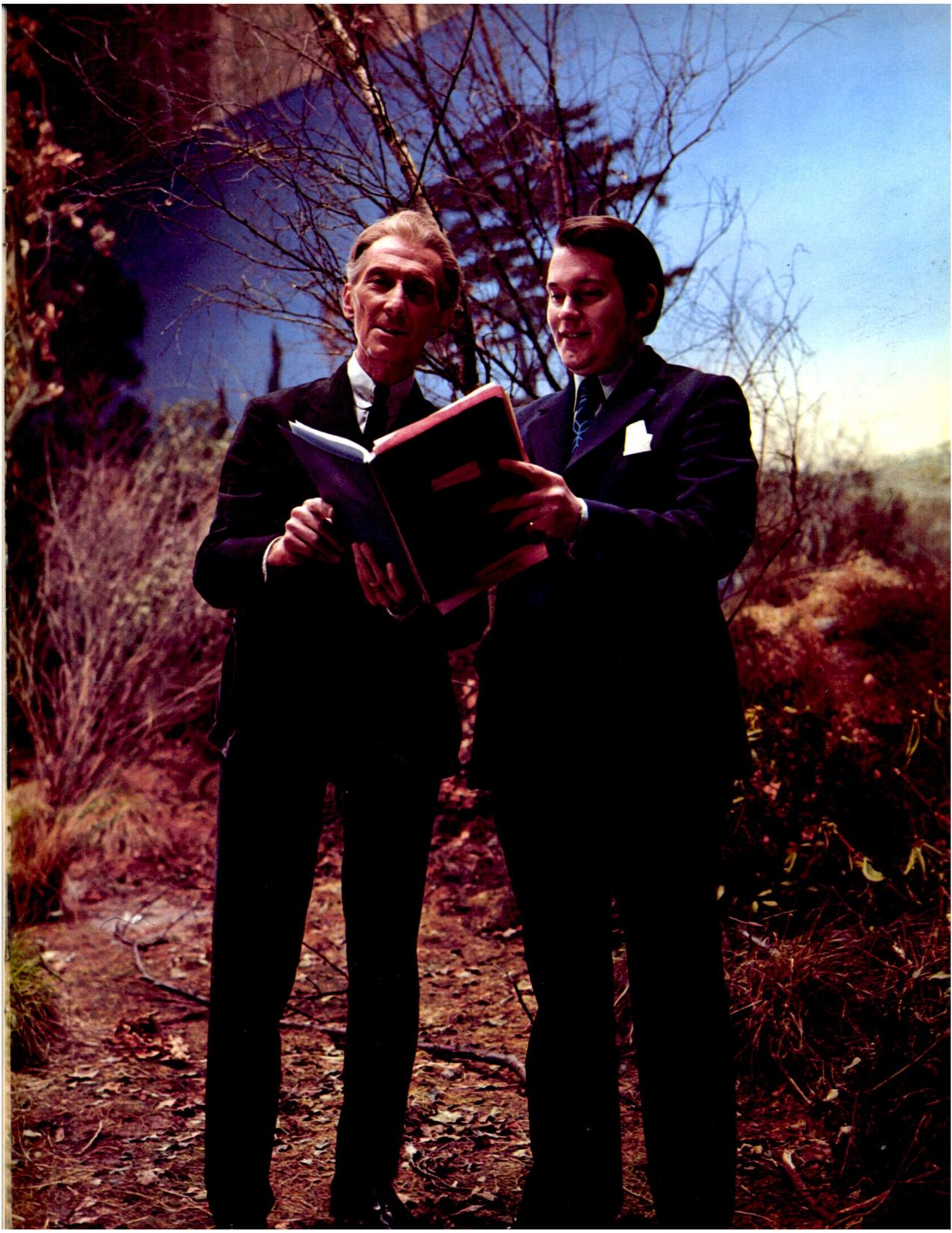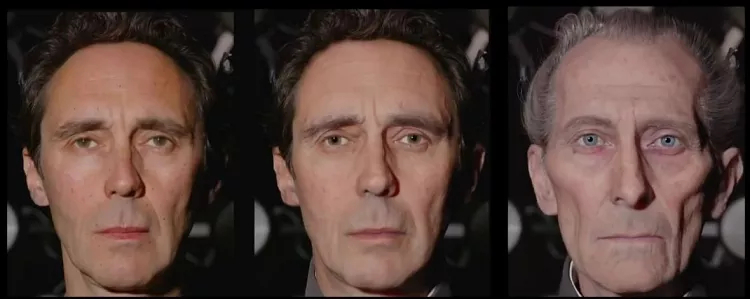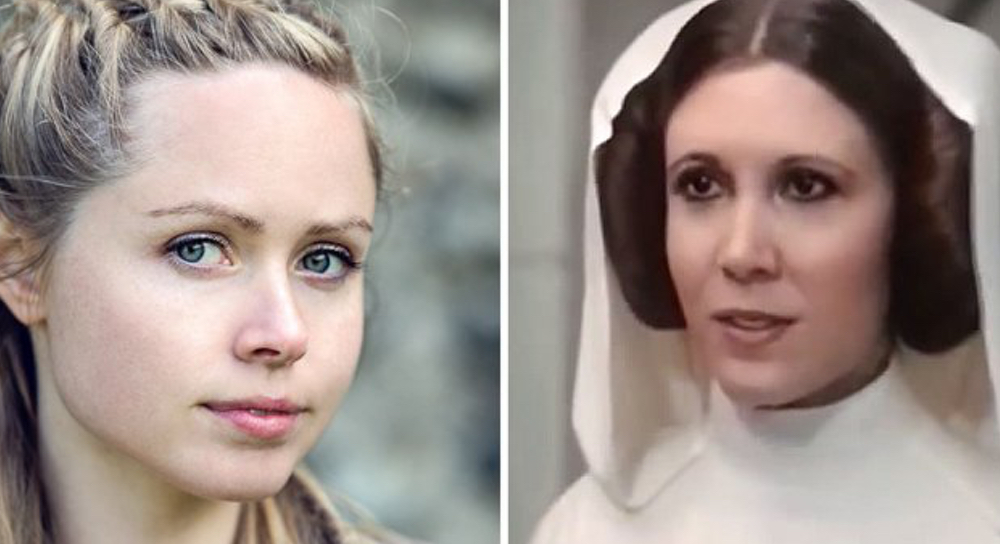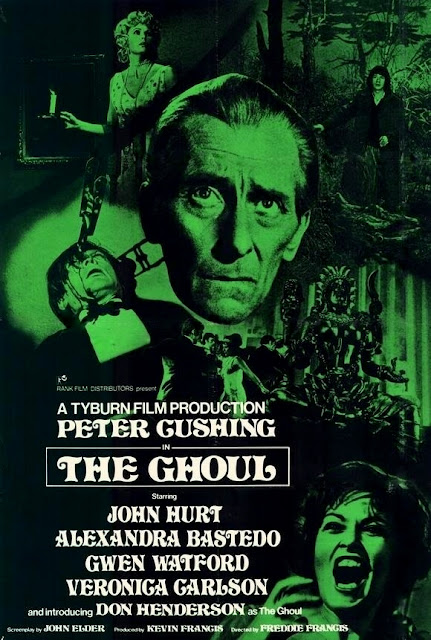A number of news reports have surfaced over the last few days pertaining to an ongoing legal action against Lucasfilm and a number of co-defendants being sued over the use of Peter Cushing’s likeness in Rogue One.
Whilst many presented this case as new, it has actually been ongoing since 2019, and only just reached mainstream media when its latest round reached the UK’s High Court. As with many legal cases, not all reporting around the case has been fully accurate – so we will do out best here to unravel the truth.
The Defendants
The case is being brought by Tyburn Film Productions Limited against five defendants.
The First and Second Defendants (Joyce and Bernard Broughton), were the executors of Peter Cushing’s estate, and are alleged to have breached the “1993 Agreement” (more on that later) by consenting to Peter Cushing’s resurrection in Rogue One without seeking Tyburn Film Productions consent. Joyce had been Cushing’s secretary since the 1950’s and Bernard from the 1970’s an unofficial business advisor to Cushing. Cushing would often live with them following the death of his wife Helen, during periods of illness. Bernard and Kevin Francis worked together on Cushing’s This Is Your Life television award. Both defendants have passed away since the case was first brought.
The Third Defendant (Associated International Management LLP), was Peter Cushing’s (and laterally his estate’s) theatrical agent, it is alleged that they induced the estate’s breach of contract. AIM are one of the leading theatrical agents in the UK, with a number of famous clients including Brian Blessed, Boss Nass in The Phantom Menace.
The Fourth and Fifth Defendant Lunak Heavy Industries (UK) Ltd and Lucasfilm Ltd LLC, who stand accused of having been unjustly enriched in respect of the exploitation of rights which they did not hold. Namely image rights to digitally resurrect Peter Cushing. Lunak is the production name for the movie Rogue One, as first revealed by myself on the Jedi News site back in 2014.
The Sixth Defendant was the Walt Disney Company, but they have since been removed from the case.
Tyburn Film Productions Limited
Tyburn Film Productions was formed by Kevin Francis in the early 1970’s, the son of acclaimed cinematographer and director Freddie Francis. Kevin’s career began as a slaughterhouse employee, but he soon moved into film starting as a tea boy for iconic horror film company Hammer, and worked his way up. He provided the story that eventually evolved into Taste the Blood of Dracula and later became a freelance production manager. His ambition, however, was to be the new Hammer in an era in the 1970’s where the horror industry was beginning to fade away.

The first ‘official’ Tyburn production was Persecution (aka The Terror of Sheba), a psychological horror story starring Lana Turner, but it was perhaps The Ghoul that was the first ‘proper’ Tyburn horror. Directed by Freddie Francis, written by Hammer stalwart John Elder and starring Peter Cushing, the supporting cast included ex-Hammer starlet Veronica Carlson, John Hurt, Ian McCullough and Alexandra Bastedo, star of TV series The Champions.
Tyburn would also work with Cushing on Legend of the Werewolf, and the The Masks of Death.
In 1989, Tyburn would produce the documentary Peter Cushing: A One Way Ticket to Hollywood, essentially an extended interview with Peter Cushing about his life, with clips from some of his best films.
It is without doubt that as well as a colleague, Kevin Francis and Peter Cushing were great friends, and Francis had a great affection for the work of Cushing.
1993 Agreement
The central claim concerns the right to digitally resurrect (and thus the right to block or restrict the resurrection) of the actor Peter Cushing by technological means.
Tyburn Film Productions Limited (the Claimant), alleges that that the use by Lucasfilm of a digital resurrection of Peter Cushing in 2016’s Rogue One: A Star Wars Story breaches a contract made between Peter Cushing’s production company, Peter Cushing Productions Limited (PCPL) and Tyburn.
Tyburn claims that it has had the sole right to use technological measures to resurrect Peter Cushing under an agreement made in 1993. The agreement was signed in relation to a TV movie that Tyburn was making with Cushing, whilst Cushing was already in ill health with cancer. The TV movie was A Heritage of Horror, it was never competed. Peter Cushing passed away at Pilgrims Hospice in Canterbury in August 1994.
The 1993 Agreement contains a clause between Tyburn, PCPL and Peter Cushing:
”If as a result of illness, Mr Cushing’s demise or any other reason, without limitation whatsoever or however, the TVM [the TV Movie] is not produced and/or completed and or/exploited, PCPL and Mr Cushing hereby warrant, undertake and agree that neither of them will permit Mr Cushing’s participation in any film or programme whereby Mr Cushing appears either in whole or in part other than in person, in or out of any character, by way of Mr Cushing being reproduced by all or any combination of the processes or techniques referred to in subparagraphs (1) through (11) of paragraph (e) without our express prior written consent, which consent we may grant or withhold at our sole and absolute discretion.”
The “processes and techniques” referred to include all special effects, computer-generated imagery and any successors to those technologies; thus this would include AI-generated content (a technology developed post 1993) used in Rogue One.
Tyburn therefore says that Peter Cushing could not be resurrected by the defendants in Rogue One without their consent. They say that consent from the Estate in the form of the first and second defendants (the Broughtons) was not sufficient because of Tyburn’s rights to block anyone else from resurrecting Peter Cushing without obtaining Tyburn’s consent (as a result of the 1993 agreement).

They claim against the Estate for breach of contract. They claim against the third defendant, who was Mr Cushing’s and subsequently the estate’s theatrical agent, for inducement of breach of contract. The claimant claims against Lucasfilm and it’s production company Lunak for unjust enrichment in respect of the exploitation of the rights that Tyburn says it was in a position to control (”the blocking/restriction rights”).
Whilst Tyburn cannot provide permission, that remains with the estate for Mr Cushing, they claim that the blocking rights allow them to effectively override and block any permission given. They were not made aware at the time of entry into, of the agreement between the estate and Lunak / Lucasfilm. Thus their right to block the rights were denied to them.
What is not clear to me, and without a legal background, in reading the extract from the contract, is whether Peter Cushing was providing rights regarding all future attempts to resurrect him, or was he intending to refer to use of content from A Heritage of Horror. IF, and it is very much a speculative IF on my part, he meant to provide rights for all future resurrections in film and TV, then why was it contingent on whether A Heritage of Horror was made or not. Effectively IF Heritage of Horror had been completed and released, then Mr Cushing had given no instruction to protect his resurrection. Which would seem a rather bizarre move, if his intention had been to protect himself from that very issue. Why was his instruction contingent on the making of that TV movie?
1976 Agreement
Lunak and Lucasfilm has been seeking to strike out / get a summary judgment in the case on the basis that an agreement had been made between Peter Cushing Productions Ltd (PCPL) and Star Wars Productions Ltd in 1976 when the original Star Wars movie was being made (the ‘1976 Agreement’), which they argued gave them a prior right to use content owned by Star Wars Productions Limited for the purposes of digitally recreating Peter Cushing.
Clause 12 of the agreement states:
”The lender [Cushing] gives every consent and grants to the company [Star Wars Productions Ltd] the rights throughout the world (a) to use and authorise others in relation to other reproductions of the artist’s physical likeness, recordings taken or made directly or indirectly from the artist’s performance, his engagement hereunder.”
”… to make or authorise others to make including any other recordings whatsoever of the artist’s performance or any part thereof and to exploit the same, and for the purposes of advertising, publicising and commercially exploiting the film or otherwise as the company may desire.”
Tyburn will seek to argue that this relates solely to Peter Cushing’s appearance or performance in Star Wars: A New Hope. Lucasfilm contend that this provides the necessary consent for Peter Cushing’s resurrection in Rogue One.
Arguments will undoubtedly centre around whether in 1976 the parties contemplated the significant advances in computer technology and CGI, even when ironically Star Wars itself and George Lucas were at the forefront of those developments.
The Copyright and Related Rights Regulations 1996
Lucasfilm also contend that Regulation 31 of the 1996 Copyright and Related Rights Regulations (which was the law in place at Mr Cushing’s death) provides them with transition provisions between the bundle of different rights that performers accrued under earlier legislation and the performance rights created by the Copyright, Designs and Patents Act 1988.
”New rights: effect of pre-commencement authorisation of copying 31. Where before commencement— (a) the owner or prospective owner of copyright in a literary, dramatic, musical or artistic work has authorised a person to make a copy of the work, or (b) the owner or prospective owner of performers’ rights in a performance has authorised a person to make a copy of a recording of the performance, any new right in relation to that copy shall vest on commencement in the person so authorised, subject to any agreement to the contrary.”
2016 Agreement
Alternatively, Lucasfilm also contend that they acquired the right under another agreement, made on 10th February 2016, between the First and Second Defendants (the Broughtons) acting as the estate for Peter Cushing and the Fourth Defendant (Lunak), (the “2016 Agreement”), specifically made in relation to the digital recreation of Mr Cushing in Rogue One. A sum of £28,000 was paid to the Estate, making Lunak “bona fide purchaser for value” of the rights to Cushing’s image. By being a bona fide purchaser for value, Lucasfilm will argue that they thus were not unjustly enriched. They made a payment as an expense in order to benefit from the right acquired, thus any income generated was off the back of that expenditure and thus can’t be deemed unjust.
Case History / And Verdict To Date
In 2019 Tyburn, through solicitors, contacted Lucasfilm, maintaining that Rogue One had been made using a digitally resurrected Peter Cushion without the permission of Tyburn and therefore in breach of the “1993 Agreement.”
A pre-action disclosure order was made against the Estate of Peter Cushing on 2 July 2021 requiring disclosure of its agreement with Lunak / Lucasfilm.
On 2 August 2021 the current proceedings were issued, raising a claim for breach of contract against the Estate, a claim for procuring breach of contract against the Third Defendant and a claim against Lunak / Lucasfilm for unjust enrichment by receiving the licence to recreate Mr Cushing from the Estate and/or the exploitation of that licence.
Following a hearing on 22 November 2023 the attempt to summary dismiss the case was initially dismissed by Master Francesca Kaye in December 2023 and she instructed it to go to trial, but permission to appeal was granted to Lucasfilm by Mr Justice Michael Green in February 2024.
The appeal was heard by Tom Mitcheson KC, sitting as a Deputy Judge of the High Court on 9th September 2024.
He said he was “far from persuaded” that Francis would succeed, but added: “I am also not persuaded that the case is unarguable to the standard required to give summary judgment or to strike it out.
“In an area of developing law it is very difficult to decide where the boundaries might lie in the absence of a full factual enquiry.”
Thus he denied the move for a summary judgement / dismissal of the case, and the case will move forward to trial.
However, based on comments made it seems that Lucasfilm and the other defendants have strong grounds in their defence and the claimant faces an uphill battle to prove their case.
Background
Directed by the UK’s Gareth Edwards, Rogue One is the first standalone movie in the Star Wars franchise, serving as a direct prequel to the events of the original Star Wars movie, A New Hope. The plot revolves around a ragtag group of Rebels who team together to steal the original Death Star’s blueprints, which eventually allows the Rebel Alliance to identify a weakness and destroy the Imperial super weapon at the conclusion of A New Hope. As Grand Moff Tarkin, Peter Cushing, was the commanding officer of the Death Star, making his role central to A New Hope’s plot but whilst small, pivotal in Rogue One. Rogue One’s cast included Felicity Jones as Jyn Erso, Diego Luna as Cassian Andor, Ben Mendelsohn as Orson Krennic, and Mads Mikkelsen as Galen Erso. It was a commercial box office success, earning over $1 billion globally, and spawned the Disney+ spin off TV show, Andor.
Disney has regularly used digital technology in de-age or resurrect actors. Carrie Fisher appeared in Star Wars: The Rise of Skywalker three years after her death in 2016 through a mix of CGI and altered unused earlier footage. She also appeared de-aged in Rogue One via CGI and the physical performance of Ingvild Deila. James Earl Jones, who died aged 93 this week, had already had his voice digitally manipulated to deliver lines for a 2022 Disney+ Star Wars TV series, Obi-Wan Kenobi, and a de-aged Mark Hamill appeared in The Book of Boba Fett and The Mandalorian.

With the proliferation of AI tools in filmmaking, the ease of recreating a deceased actor’s likeness is likely to only increase. In response to this evolving technology, the state of California has now passed a law that requires consent from performers for AI to use their likeness after their deaths. The UK where much of the filming for Star Wars takes place has no such legislation currently in force.
As for the ethics of using digital resurrected actors, thats a whole other debate…




